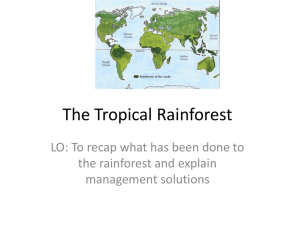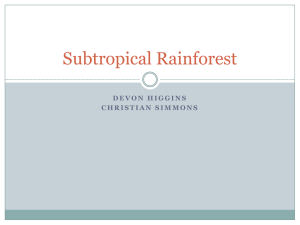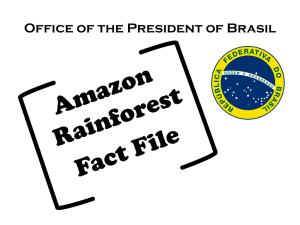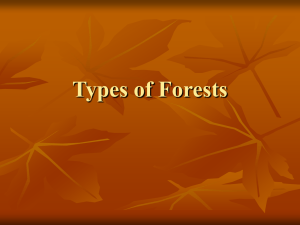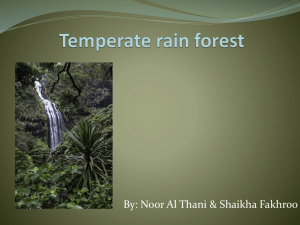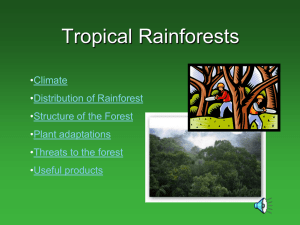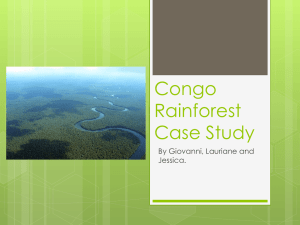Slide 1
advertisement
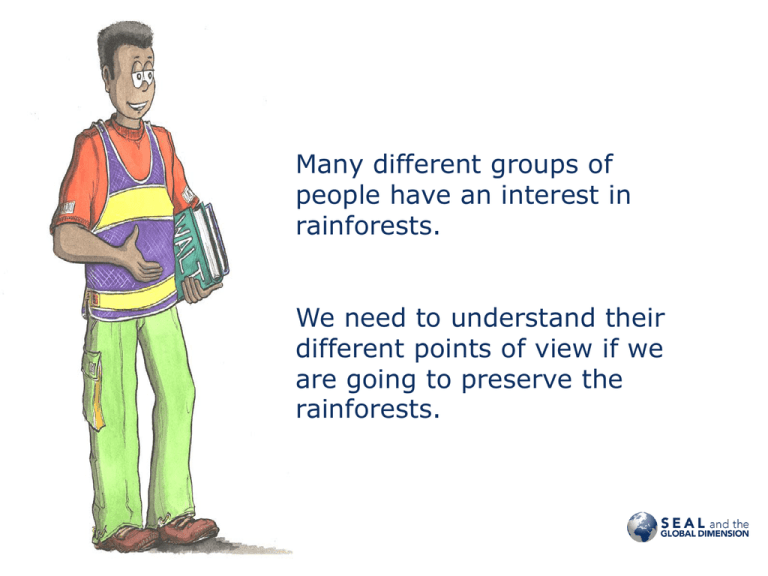
Many different groups of people have an interest in rainforests. We need to understand their different points of view if we are going to preserve the rainforests. I know that rainforests are important in many different ways. I can explain problems and solutions regarding rainforest destruction. Give me five… Name five things you know about rainforests: 1. 2. 3. 4. 5. Video choice a) http://www.wwf.org.uk/what_we_do/safeguarding_the_nat ural_world/forests/forest_work/amazon/ Video choice b) www.bbc.co.uk/learningzo ne/clips/life-in-therainforest/4635.html What is the film ‘Avatar’ all about? www.avatarmovie.com Timber! Rainforest simulation • The rainforest is based in the imaginary southern hemisphere country of Latasica. • Nordia is a rich northern hemisphere country, one of the richest countries in the world. • The nine groups are users of the rainforest, most needing to cut down trees (this is indicated on their role cards); two have an interest in the rainforest, but do not require its timber. Timber! Groups: • • • • • • • • • Burgerbeef Incorporated Forestwatch ** Kapano - " The Forest People” Medico PLC ** 'TreeCo' Nordian Tourists Latasican Government Resettled People Nordian Government ** These groups do not need to cut down trees Timber! How it works 1: • The paper cups represent the rainforest. It used to be considerably larger in size; this is all that now remains. • The facilitator will blow a whistle every five minutes during the game. • Each time the whistle blows, those groups that need to cut down trees must take the number of trees (cups) specified on their role cards from the forest. Timber! How it works 2: • Trees should always be taken from the edge of the forest. • The trees marked with a blue dot are mahogany which is rare and takes many years to grow. • The facilitator will take the role of the United Nations Environmental Programme Timber! How it works 3: • If groups want to make agreements to cut down more trees or to replant, they must get an agreement from another group. • Both groups must come to the United Nations for approval. • If there is an agreement to replant trees, the rate of replanting is one tree per group signing the agreement each time the whistle blows. Timber! Rainforest simulation • What have we learned about the rainforest from this simulation? • Which groups managed to achieve their aims? How? • Which did not? Why not? • What will happen to the rainforest if this carries on? Timber! International Conference • Look at your role card • Think about what happened in the activity with the rainforest • Did you achieve what you set out to do? What were the problems? • Did you make agreements with other groups? • You have ten minutes to prepare a two minute presentation to the UN conference about what you feel are the issues to do with the rainforest. Timber! International Conference • Each group has two minutes to present their case. • After all the presentations there is the opportunity to ask questions of other groups / discuss the issues more. • Can we reach an agreement about how to look after the rainforest? Rainforest simulation: Debrief • How did you feel about the role you were asked to play? • How did the 'local people' (Kopano, Resettled People) feel about the 'outsiders' in the forest? • What did those working in the forest think about the people who lived there? • What were the attitudes of the groups towards conservation of the forest? Was there a similar attitude displayed by all those living there, and by all those working there? • Did any groups increase their timber requirements during the game, or were any groups persuaded to reduce theirs? • What do you think would have happened if the game had continued? • Do powerful groups, like wealthy countries and transnational corporations, have a right to cut down large areas of forest? Whose interests are they serving? • Who should protect the rights of the local people living in such areas, and how? • What might be the long-term consequences of destruction of the world's forests (a) for people living in the region or country concerned, (b) for the rest of the world? • What steps need to be/could be taken to halt the destruction of forests? Are there any 'economic' policies governments could pursue to protect forests?

